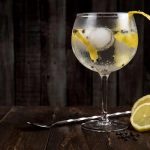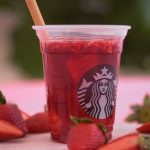Embarking on the journey to understand our daily water intake, the question “How many bottles of water is a gallon?” emerges as a cornerstone of hydration knowledge. This seemingly simple inquiry opens the door to a deeper understanding of our water consumption habits and their implications for our health, the environment, and our daily routines. In a world where the average person reaches for a plastic bottle of water without a second thought, comprehending the volume of water our bodies require, and how it translates into the bottles we consume, is vital.
Join us as we unravel the mysteries of hydration, bottle by bottle, gallon by gallon, in our quest for a healthier self and planet. Your journey towards understanding and optimizing your daily water intake starts here, promising revelations that may surprise you and inspire changes that ripple well beyond your next sip of water.
Contents
- 1 The Standard Water Bottle Size
- 2 How Many Bottles Of Water Is A Gallon?
- 3 Different Water Sources and Measurements
- 4 Why Hydration Matters
- 5 Effects of Dehydration
- 6 Factors Affecting Water Requirements
- 7 Signs of Adequate Hydration
- 8 Overhydration and Hyponatremia
- 9 Conclusion: How Many Bottles Of Water Is A Gallon?
The Standard Water Bottle Size
Most single-serve bottled water in the U.S. contains 16.9 fluid ounces. This has become the standard water bottle size that many calculations are based on. Some key details on this measurement:
- 16.9 ounces is approximately equal to 500 milliliters.
- A fluid ounce is a volume measurement, not related to weight.
- The 16.9 ounce bottle contains just over 5 servings of water (using the 8 ounce serving size).
Understanding that the typical water bottle contains 16.9 ounces allows us to easily compute how many bottles equal certain gallon amounts.
How Many Bottles Of Water Is A Gallon?
- There are 8 bottles of 16.9 oz water in a gallon
- Another source confirms that 8 bottles of 16 oz water equal a gallon
- In terms of different bottle sizes, for 16 oz bottles, you would need 7.5 bottles to make a gallon
- For 8 oz bottles, you would need 15 bottles to make a gallon
Therefore, the number of bottles in a gallon varies depending on the size of the water bottles, ranging from 7.5 to 15 bottles for different bottle sizes.
Different Water Sources and Measurements
In addition to bottled water, there are various other water sources and measurements to understand:
Tap water
- Comes from public water systems treated for consumption.
- Initial quality depends on your municipality. Can be further filtered at point of use.
- Measured in gallons or liters from home tap.
See more : How Many Calories In Whiskey? Whiskey Calorie Breakdown
Filtered water
- Tap water that is processed through filters to remove impurities.
- Filters may use methods like activated carbon, UV light, reverse osmosis.
- Dispensed from pitchers, faucet systems, refrigerators, or water bottles.
Spring water
- Collected from natural underground springs or boreholes.
- More naturally mineralized but not necessarily safer than tap water.
- Typically measured by bottle/case like purified bottled water.
Purified bottled water
- Starts with tap water or groundwater that goes through various purification methods.
- Includes distillation, deionization, reverse osmosis, carbon filtration.
- Sold in plastic bottles or jugs measured in ounces/liters.
Understanding the different water types and measurements helps inform hydration planning and hitting daily intake goals.
Why Hydration Matters

Being properly hydrated offers many benefits for your health and wellbeing. Here are some of the key reasons to prioritize hydration:
- Blood circulation – Water allows blood to flow efficiently and transport oxygen/nutrients throughout the body.
- Digestion – Adequate hydration aids digestion, prevents constipation, and maintains electrolyte balance.
- Weight management – Water is calorie-free and drinking it before meals can help reduce appetite.
- Brain function – Your brain needs water to focus and concentrate. Even mild dehydration impairs cognition.
- Temperature regulation – Water helps regulate body temperature through sweat and respiration.
- Joint lubrication – Hydrated cartilage and tissues allows for pain-free joint mobility.
- Skin health – Water keeps skin looking plump and supple while flushing out impurities.
- Disease risk – Chronic dehydration is linked to higher risk of renal disease, hypertension, diabetes, and heart conditions.
The takeaway is that water impacts nearly every bodily system and process. Sustaining adequate hydration should clearly be a top priority for long-term health.
Effects of Dehydration
While proper hydration has many benefits, insufficient water intake can negatively affect the body in numerous ways:
- Fatigue – Cells deprived of water have less energy available for muscles.
- Headaches – Dehydration causes blood volume reduction which strains the brain.
- Dizziness – Water is needed for blood pressure regulation to prevent fainting.
- Confusion – Fluid loss impacts cognitive function and mental acuity.
- Constipation – Water reabsorption from the colon causes harder stools without sufficient hydration.
- Kidney strain – Inadequate water places excess burden on the kidneys to filter waste.
- Exercise impairment – Just a 2% fluid loss harms aerobic capacity and motor control.
- Mood changes – Studies show dehydration frequently induces irritability, anxiety, and depression.
While a little thirstiness may seem harmless, sustained dehydration can have profound effects on all aspects of health. Seeking early signs of suboptimal hydration levels is key to avoiding associated problems.
Factors Affecting Water Requirements
See more : How Many Shots Of Vodka To Get Drunk? Avoid Overdoing It
Several factors impact an individual’s daily water requirements, including:
- Climate – Hot or humid weather increases hydration needs due to sweat.
- Exercise – Physical activity causes you to lose more water through sweat. Requires additional intake.
- Pregnancy/nursing – Women need extra fluids to stay hydrated during pregnancy and breastfeeding.
- Illnesses – Certain conditions like fever, vomiting, and diarrhea dehydrate you faster.
- Medications – Some supplements like diuretics increase urination and water loss.
- Fiber intake – Fiber-rich diet requires more water to aid digestion.
- Caffeine/alcohol – These liquids have a mild diuretic effect and contribute to dehydration.
Based on these factors, you may need to modify general intake recommendations to meet your specific hydration needs.
Signs of Adequate Hydration

How can you know if you are drinking enough water throughout the day? Signs of proper hydration include:
- Clear or light yellow urine – Dark yellow suggests concentrated, inadequate water intake.
- Regular bowel movements – Constipation can indicate dehydration.
- No persistent thirst or fatigue – Routine thirst and tiredness often means insufficient fluids.
- Lighter exercise sweat – Profuse, heavy sweating may indicate fluid needs are not met.
- Good skin elasticity – Skin regains shape quickly when pinched rather than tenting with dehydration.
Aim to maintain these markers of hydration and avoid the negative effects of water imbalance.
Overhydration and Hyponatremia
While dehydration poses many health issues, it is also possible to overconsume water. Drinking an excessive amount can negatively impact electrolyte balance.
- Hyponatremia – Excessive hydration that dilutes sodium in blood, causing cellular swelling.
- Can result in nausea, headaches, fatigue, vomiting, and even death in extreme cases.
- Particularly risky for endurance athletes who drink beyond sweat losses.
- Caused by consistently overshooting water needs and flushing out sodium.
To avoid overhydration:
- Drink to satisfy thirst – Let your natural thirst guide intake rather than forcing excess water.
- Limit long bouts of excessive intake – Spacing water over the day is safest.
- Ensure sufficient sodium intake – Sports drinks or salty snacks help replace sodium lost to sweat.
For most people, hydration within recommended guidelines and paying attention to thirst is sufficient to support health without overdoing water consumption.
Conclusion: How Many Bottles Of Water Is A Gallon?
Understanding standard water bottle and gallon sizes allows you to effectively calculate your hydration needs. Following individualized intake recommendations can help you stay optimally hydrated. While specific requirements vary, consistently hitting daily water goals sustains all bodily functions and promotes long-term health. Be sure to pay attention to early signs of dehydration, overhydration, and factors that influence your personal fluid needs. With some simple math and mindfulness, proper hydration is an easily achievable goal with huge benefits.

Michael J. Fanola is the chef and owner of Joe’s French Italian Inn Restaurants. He has over 30 years of culinary experience, and his restaurants have been voted “Best Italian Restaurant” by the readers of the Staten Island Advance for many years in a row. Michael is a graduate of the prestigious Culinary Institute of America, and he has worked in some of the most highly acclaimed kitchens in the country.




